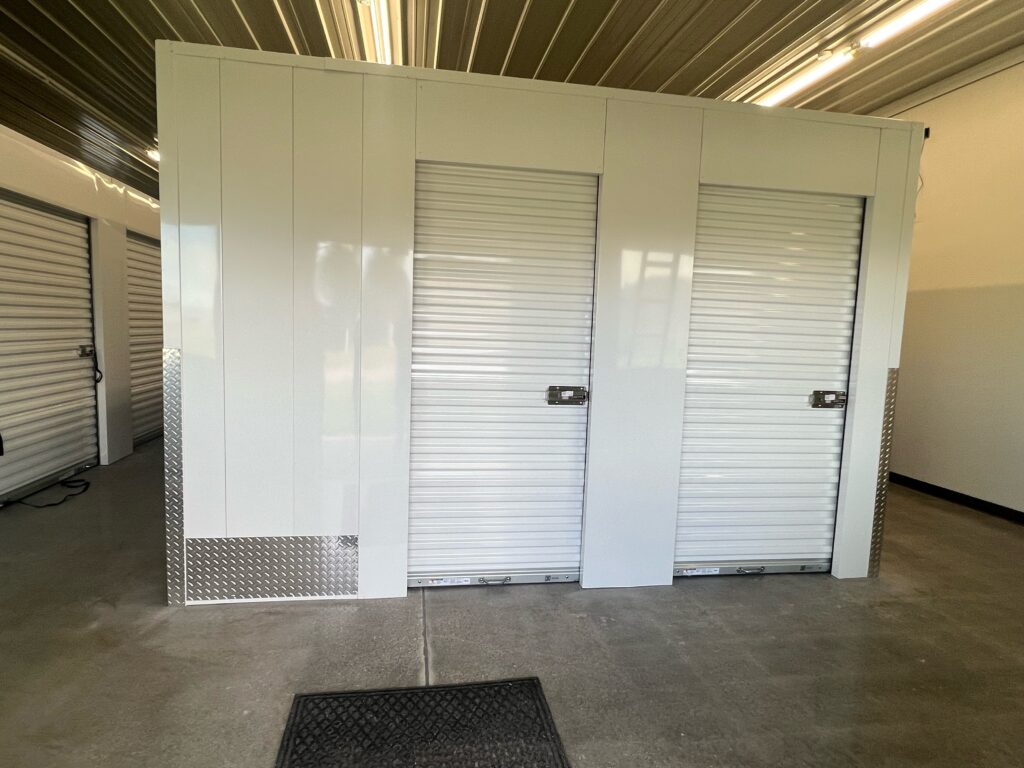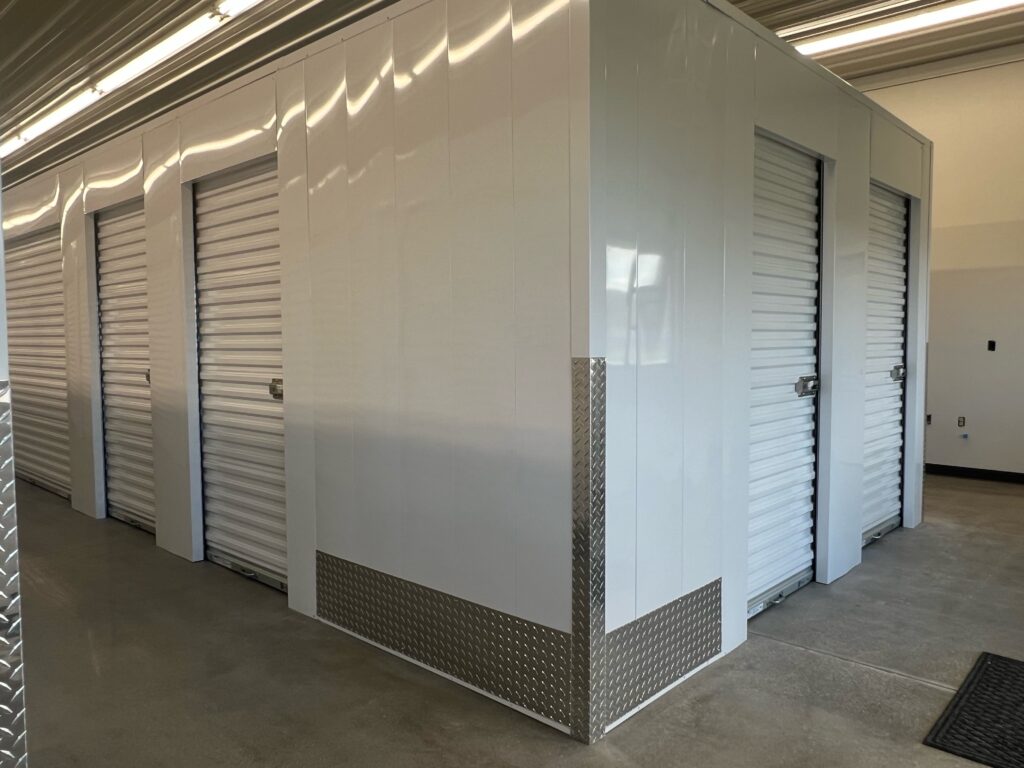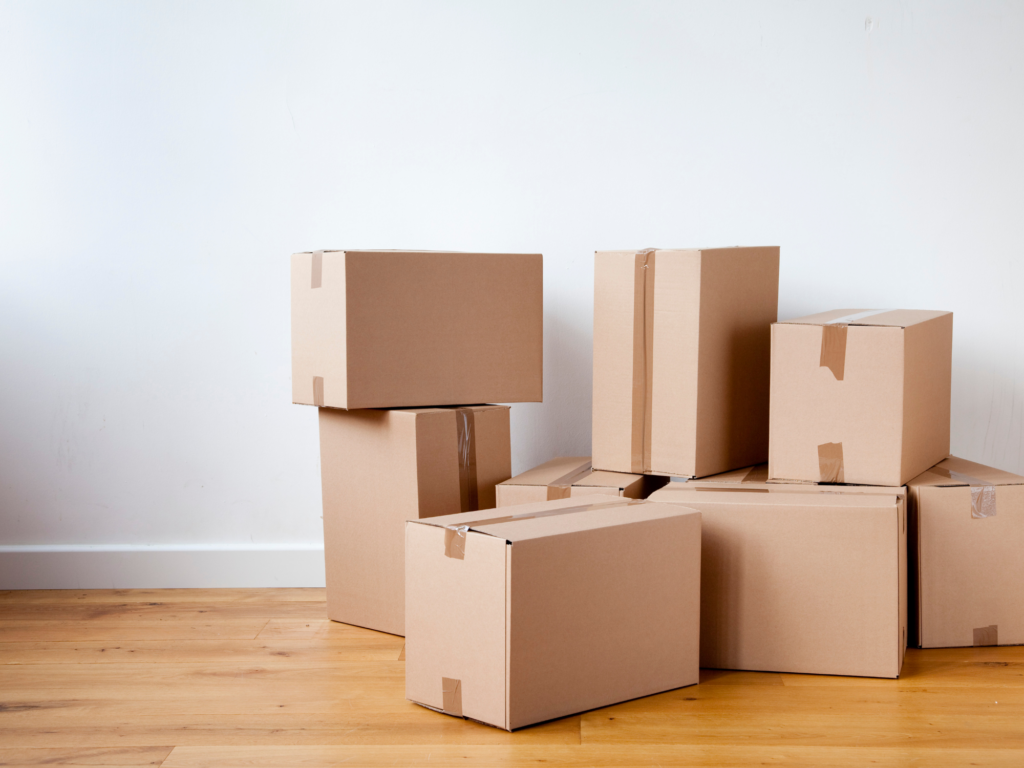Small Business Storage Solutions: 12 Smart Ways to Save
Running a small business often means wrestling with a simple math problem: too much stuff, not enough affordable space. Sioux City warehouse rates hover near $0.90 a square foot and office closets fill up fast, so every extra box of product, stack of documents, or piece of equipment quietly chips away at cash flow. Meanwhile, customers expect lightning-fast shipping and spotless compliance records, leaving no room for clutter or costly delays.
That pressure is exactly why we pulled together this guide. Below you’ll find 12 smart storage solutions—from smartphone-enabled self-storage units to zero-inventory models like print-on-demand—each weighed for cost, flexibility, and real-world practicality. Whether you need a short-term home for trade-show gear or a long-term plan to keep overhead low, you’ll walk away with clear, actionable options and ballpark numbers to compare. Ready to stop paying for space you don’t use and start putting those dollars back into growth? Let’s jump into the first idea: renting a modern keyless self-storage unit. https://www.youtube.com/embed/wEKuzmNS1R0
1. Rent a Modern Keyless Self-Storage Unit (Example: Keyless Storage)
For many firms, the fastest —and least disruptive—way to trim square-foot costs is to move overflow inventory or equipment into a tech-forward, climate-controlled self-storage unit. Sioux City–based Keyless Storage shows how small business storage solutions now feel more like SaaS than old-school lockers.
How Smartphone-Enabled Self-Storage Works
A Bluetooth or Wi-Fi lock pairs with a mobile app, letting owners and authorized staff open doors 24/7 without metal keys. Real-time “digital keys” can be shared or revoked instantly, cameras record every entry, and climate sensors keep temperatures steady—ideal for electronics, documents, or cosmetics.
Why It Saves Money for Small Businesses
Typical office leases in Sioux City run $0.90–$1.20 per sq ft on multi-year terms. A 10×10 unit at Keyless Storage averages under $0.70 and is month-to-month, so you only pay for the space you actually fill. Common use cases include e-commerce overflow, contractor tools during remodels, and off-season trade-show booths.
Typical Unit Sizes & What Fits Inside
| Unit Size | What Fits | Quick Note |
|---|---|---|
| 5×5 | ≈50 small boxes or sales samples | Closet substitute |
| 10×10 | Two standard office rooms (roughly a 1-bed/2-room apartment) | Most popular |
| 10×20 | Palletized goods, full trade-show setup, large equipment | Forklift-friendly |
Compliance & Legal Considerations
Storing inventory is fine; running a customer-facing shop from the unit usually violates zoning and the facility lease. Keep hazardous materials out and maintain business insurance for stored items.
Quick Start Checklist
- Measure current cubic footage needed
- Reserve the right size online
- Upload employee emails to the access app
- Add boltless shelving for vertical space
- Label aisles so picking orders takes seconds
2. Sublease Unused Office or Retail Space
Not every company needs pallet racks—sometimes the cheapest square footage is hiding in plain sight. Subleasing idle corners of another tenant’s office or shop can slash storage costs without adding a second address.
Turning Dead Square Footage Into Savings
Search local business forums or ask your landlord about tenants with extra rooms, storage closets, or basements. Because the main renter already pays the bulk of rent and utilities, you negotiate a pro-rated fee—often 30–60 % less than market rates.
Lease Clauses & Negotiation Tips
Before you shake hands, comb through the master lease. Key sections to confirm: written landlord consent, liability wording that protects both parties, how power and Wi-Fi charges are divided, and an escape clause if either business relocates. Get certificates of insurance exchanged and sign a separate sublease agreement.
Best-Fit Business Types
Light-inventory startups, consultants storing trade-show banners, and makers needing a micro studio benefit most. Noise-free, low-hazard goods keep neighbors happy and reduce the odds of lease pushback.
3. Split a Warehouse Through Co-Warehousing
Once your inventory outgrows a 10×20 unit but you’re not ready for a long-term industrial lease, co-warehousing hits the sweet spot. Think of it as a gym membership for pallets: pay for only the square footage you park on the floor and share the rest.
What Is Co-Warehousing?
Specialized facilities divide a large warehouse into flexible pallet bays with communal loading docks, forklifts, and conference rooms. You rent pallet positions month-to-month, swipe in with a badge, and tap on-site software to book pickups or print labels.
Cost Comparison vs. Traditional Leases
| Option | Pricing Model | Typical Cost | Commitments |
|---|---|---|---|
| Standard warehouse lease | $/sq ft | $0.75 – $1.50 per sq ft | 3–5-year term |
| Co-warehousing | $ per pallet | $8 – $15 per pallet | Monthly |
Operational Perks
- Built-in shipping platforms that sync with Shopify and Amazon
- Scalable space: add or drop pallets overnight
- Networking events with fellow entrepreneurs
- Access to photo booths and small packing stations—smart small business storage solutions without the overhead
4. Bring Storage to Your Door with Portable Containers
When you can’t spare staff hours for multiple trips to a facility, portable containers turn the loading dock into your parking lot. A truck drops off a weather-sealed box, you fill it on your schedule, and decide whether the container stays on-site or heads to a secure depot.
How Portable Storage Works
The provider positions a steel container (typically 8×12 ft or 8×16 ft) curbside or in your lot. You self-load at ground level—no ramps—lock it, then trigger pickup through an app or phone call. The unit is lifted onto a flatbed, transported, and stored indoors or in a monitored yard until you need it back.
Budget Advantages
- One move, not two: goods go straight from your premises into the container—no van rental or double handling
- Flat monthly fee tied to container size, not square footage
- Short-term rentals avoid 12-month lease commitments, making this one of the nimblest small business storage solutions
Ideal Scenarios
Remodeling a storefront, rotating seasonal inventory, safeguarding records during disaster recovery drills, or staging event gear the week before a trade show—all benefit from door-to-door convenience without tying up warehouse space.
5. Use Peer-to-Peer Storage Marketplaces
Peer-to-peer marketplaces such as Neighbor and Stache let companies rent spare garages, basements, or extra warehouse bays from local hosts at a fraction of traditional self-storage rates. Listings show price, size, and photos, so you can comparison-shop in minutes.
Renting Spare Garages and Warehouses from Neighbors
Filter by square footage, door height, or climate control, chat with the owner, then book through the platform’s escrow system—no messy cash hand-offs.
Key Pros & Cons
Pros
- 30–50 % cheaper than commercial facilities
- Hyper-local spots often within a mile of your shop
Cons
- Security measures differ widely
- Access hours may be irregular and host-dependent
Safety & Insurance Must-Dos
- Sign a written agreement that mirrors a standard lease
- Keep a detailed, photo-backed inventory of stored items
- Add a storage rider to your business insurance or purchase coverage through the app
6. Go Vertical with High-Density Shelving & Mezzanines
When floor space runs out, look up. Converting wasted air into usable storage can double capacity without a new lease, making vertical upgrades one of the most cost-effective small business storage solutions available.
Maximizing Cubic Footage
Start with boltless pallet racking or adjustable cantilever arms for odd-shaped items. Add mobile aisle shelving that compresses rows together and opens only where you’re picking—slashing required footprints by up to 50 %. For big warehouses, a freestanding mezzanine floor literally creates a second story for light assembly or overflow cartons, no concrete pour required.
Cost vs. Savings
A basic two-tier rack system averages $8–$11 per square foot installed. Many owners recoup that outlay within 12–18 months when compared with renting an extra 500 sq ft at $1 per sq ft monthly. Mezzanines beat relocations by avoiding broker fees, utilities, and downtime.
Safety & Compliance
Always verify load ratings (psf) and anchor uprights to the slab. Maintain 18-inch clearance below sprinkler heads, install guardrails on mezzanines, and label aisles per OSHA 29 CFR 1910. Seismic bracing and anti-tip footplates protect both inventory and staff.
7. Digitize Paper Records with Secure Cloud Storage
File cabinets aren’t just space hogs—they’re silent profit eaters. Between monthly off-site box fees and the time staff spend digging for documents, paper storage often costs more than cloud subscriptions plus a desktop scanner—and eats valuable square footage you could monetize.
Paper vs. Digital Cost Breakdown
A single banker box averages $8 – $12 per month to store (≈$96-$144/yr). Five years of archiving 100 boxes can top $48,000. Compare that with a business-grade cloud plan at $15 per user per month ($180/yr) plus one-time scanning gear (≈$600). Add faster search and zero real-estate cost, and digital wins handily.
Choosing a Compliant Cloud Provider
Look for SOC 2 or ISO 27001 audits, optional HIPAA add-ons, encryption at rest, and two-factor authentication. Major players (Microsoft 365, Google Workspace) also let you set granular retention rules for IRS and GDPR compliance.
Step-by-Step Scanning Workflow
- Buy a 25-ppm duplex scanner
- Create a file-naming convention (
YYYY-MM-DD_ClientName_DocType) - Scan to an encrypted folder, then auto-sync to the cloud
- Enable nightly cloud backups to a second region
- Shred originals on a 30-day schedule unless legally required to keep
8. Adopt Just-In-Time (JIT) Inventory Practices
The cheapest square foot to rent is the one you never have to store at all. JIT keeps inventory levels lean by scheduling supplier deliveries to arrive only when orders are pending, so both floor space and working capital stay light.
How JIT Shrinks Storage Footprint
Shorter lot sizes and more frequent replenishment cut average days-on-hand, meaning pallets spend hours, not weeks, on racks. Freed-up real estate can eliminate a secondary warehouse or let you downgrade to smaller self-storage—instantly lowering fixed costs.
Risks & Mitigation
Tight timing raises exposure to shipping delays and stock-outs. Mitigate with:
- Minimal safety stock on A-items
- Backup suppliers for critical SKUs
- Real-time inventory software that flags low stock before it’s urgent
Quick-Start Plan
- Perform an ABC analysis to rank products by demand velocity.
- Calculate reorder points using
Reorder Point = (Avg Daily Demand × Lead Time) + Safety Stock. - Share rolling forecasts with vendors.
- Review KPIs—fill rate, carrying cost, inventory days—monthly to iterate.
9. Outsource Fulfillment to a 3PL
Packing boxes at midnight is a rite of passage—but it quickly caps growth. A third-party logistics provider (3PL) stores your inventory in its network of warehouses, then picks, packs, and ships orders automatically when a sale hits Shopify, Amazon, or your POS. By moving the heavy lifting off-site, you convert fixed rent and labor into a pay-as-you-go service.
What 3PLs Offer Beyond Storage
- Barcode receiving and real-time inventory dashboards
- Discounted carrier rates and automatic label generation
- Kitting, light assembly, and returns processing
- Multi-warehouse distribution so orders ship from the closest node, trimming transit time and carbon footprint
Fee Structure Explained
Most 3PLs break costs into four buckets:
| Charge Type | Typical Rate | Notes |
|---|---|---|
| Storage | $15–$25 per pallet/month | Climate-control extra |
| Pick & Pack | $0.25–$0.45 per item | First pick often free |
| Receiving | $5–$15 per pallet | Includes barcode count |
| Extras (kitting, inserts) | $35–$50 per hour | Quoted project-by-project |
A 200-order week might run $360 total—often less than a part-time employee plus warehouse rent.
When to Move to a 3PL
Signs it’s time: you’re shipping 300+ orders monthly, juggling multi-channel sales, or eyeing international customers. If storage space, labor, or carrier negotiations are dragging you down, a 3PL lets you scale without adding square footage.
10. Leverage Dropshipping and Print-on-Demand
Want to eliminate storage altogether? Dropshipping and print-on-demand (POD) turn your supplier’s warehouse into your own, freeing cash and floor space for growth projects instead of pallets. These zero-inventory options slot nicely into a toolkit of small business storage solutions when you sell physical goods but don’t want physical stock.
Zero-Inventory Business Models
With dropshipping, you list products online, forward each paid order to a wholesale supplier, and they ship straight to the customer under your brand. POD works the same way for shirts, mugs, and books—items are printed only after the sale, so leftover stock is impossible.
Financial Upside and Margin Math
No warehousing cost, no bulk purchase risk. Example:Gross Margin = (Price $40 – Unit Cost $22 – Fulfillment $6) / $40 = 30%
If you held inventory, you’d add storage, shrink, and capital costs that can slice another 8–12 points off margin.
Quality & Branding Tips
- Order samples quarterly to audit print clarity and packaging.
- Upload branded packing slips or inserts; most platforms do this free.
- Set honest delivery windows (e.g., 5–8 business days) on product pages to prevent chargebacks and keep reviews glowing.
11. Take Advantage of Storage-Related Tax Breaks
Smart accounting turns storage costs into tax savings—if you know which line items to claim.
What the IRS Lets You Deduct
Self-storage rent, warehouse rent, related insurance, and even the electricity that powers climate-control qualify as “ordinary and necessary” business expenses (IRS Pub 535). They’re 100 % deductible in the year paid, cutting taxable income dollar for dollar.
Section 179 & Bonus Depreciation
Section 179 lets you expense up to $1,220,000 of qualifying gear—shelving, scanners, portable containers—in 2025. Amounts above the cap enjoy 60 % bonus depreciation, so upgrades recoup cash sooner.
Record-Keeping Essentials
Save every receipt, log mileage to and from the unit, and photograph stored assets for proof. Organize docs in the cloud under Storage_Tax_2025—a five-minute habit that fends off costly audits.
12. Dispose, Donate, or Consign Surplus Goods Strategically
Hanging on to slow-moving stock often costs more than it’s worth. Before you rent extra space, weigh the carrying cost of each pallet against the cash (and shelf room) you’ll free up by letting it go.
When Storing Costs More Than It Saves
Calculate the annual holding cost:Carrying Cost = (Unit Value × Carrying Rate %) × Units Held
If the number tops the item’s gross profit potential, storage is burning money—sell, donate, or consign instead.
Monetizing Idle Assets
- List obsolete products on liquidation marketplaces or B2B auctions.
- Place high-value tools on peer rental apps to earn day rates.
- Consign apparel or décor to specialty boutiques; you get paid when it sells, they handle storage.
Tax & PR Benefits of Donations
- Charitable contributions are deductible at fair-market value (IRS Form 8283).
- Donating overstocks to local nonprofits boosts community goodwill and employee morale.
- Publicize the gift on social media—free publicity beats paying for warehouse space.
Final Takeaways
Taken together, these 12 small business storage solutions form a ladder of options that scales with your company. Need quick overflow space? Keyless self-storage or a portable container solves it in a day. Looking for deeper savings? Go vertical, digitize, or adopt JIT to shrink cubic feet altogether. When growth outpaces your floor plan, co-warehousing, 3PLs, dropshipping, or even an outright inventory purge keeps overhead light and cash free for marketing and product development—not rent. By mixing and matching, you can cut carrying costs, speed fulfillment, and stay nimble enough to pounce on opportunities instead of tripping over boxes.
If you operate in or around Sioux City and want an instant win, reserve a unit at Keyless Storage today. You’ll lock in 24/7 keyless access, climate control, and one of the smartest price-per-square-foot deals in town.





